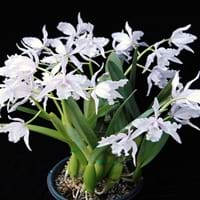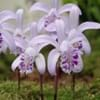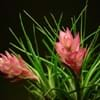Life Span
Perennial
Perennial
Type
Epiphyte
Flowering Plants, Fruits, Herbs
Origin
Mexico
Australia, Tropical Indomalaya
Types
Laelia candida, Laelia discolor
Cavendish Bananas, Lady Finger Bananas, Pisang Raja, Williams Bananas, Cooking Bananas
Habitat
shaded riverbanks, Subtropical climates
Subtropical climates, Tropical rainforest, Tropical regions
USDA Hardiness Zone
9-11
8-15
Sunset Zone
H1, H2, 19, 20, 21, 22, 23, 24
H1, H2, 2a, 2b, 3a, 3b, 4, 5, 6, 7, 8, 9, 14, 15, 16, 17, 18, 19, 20, 21, 22, 23, 24
Habit
Clump-Forming
Upright/Erect
Flower Color
White, Light Pink, Lavender
Burgandy, Ivory, Purple, White, Yellow
Flower Color Modifier
Not Available
Not Available
Fruit Color
Dark Blue
Red, Yellow, Yellow Brown, Yellow green
Leaf Color in Spring
Green
Dark Green
Leaf Color in Summer
Green
Green
Leaf Color in Fall
Green
Green
Leaf Color in Winter
Green, Gray Green
Green
Leaf Shape
Acicular
Cone shaped
Plant Season
Fall, Winter
Fall, Spring, Summer
Sunlight
Partial Sun, Partial shade
Full Sun, Partial shade
Type of Soil
Not Available
Clay, Loamy
The pH of Soil
Not Available
Neutral, Slightly Acidic
Soil Drainage
Well drained
Well drained
Bloom Time
Fall, Late Fall, Early Winter, Winter
Early Fall, Early Summer, Late Spring, Late Summer, Summer
Tolerances
Heat Tolerance, Salt and Soil Compaction
Not Available
Where to Plant?
Container, Ground
Ground
How to Plant?
Divison
From bulbs
Plant Maintenance
Low
Medium
Watering Requirements
Needs watering once a week
Allow soil to be completely dry in between waterings, It cannot sustain wet-feet, Requires regular watering, Water every two or three days during warmer months
In Summer
Lots of watering
Lots of watering
In Spring
Moderate
Moderate
In Winter
Average Water
Average Water
Soil pH
Slightly Acidic
Neutral, Slightly Acidic
Soil Type
Well-aerated
Clay, Loamy
Soil Drainage Capacity
Well drained
Well drained
Sun Exposure
Partial Sun, Partial shade
Full Sun, Partial shade
Pruning
Remove lateral branches
Prune after harvesting, Remove dead or diseased plant parts
Fertilizers
Apply 10-10-10 amount, Use nitrogen rich soil
All-Purpose Liquid Fertilizer
Pests and Diseases
Aphids, Bacterial leaf spot, Fusarium wilt
Anthracnose, Banana aphid, Banana mosaic, Black sigatoka, Bunchy top, Cigar end rot, Coconut scale, Moko disease, Panama disease, Rhizome rot, Yellow sigatoka
Plant Tolerance
Heat Tolerance, Salt and Soil Compaction
Drought
Flower Petal Number
Single
Single
Foliage Texture
Coarse
Bold
Foliage Sheen
Matte
Glossy
Attracts
Aphids, Mites
Not Available
Allergy
conjunctivitis, Dermatitis, Skin rash
Anaphylaxis, Mouth itching, Throat itching
Aesthetic Uses
Beautification, Showy Purposes
Not Available
Beauty Benefits
Not Available
Not Available
Environmental Uses
Very little waste
Air purification
Medicinal Uses
Prevention of convulsion, Vasorelaxant
Anemia, Antioxidants, Bronchitis, Diarrhea, Hangover, Heartburn, High blood pressure, Kidney problems, Menstrual Disorders
Part of Plant Used
Not Available
Flowers, Fruits
Other Uses
Application in Handicrafts, Making Perfumes, Making Sweet Scented Oil, Used as Ornamental plant
Pulp can be used to make rope place mats and other goods, Used As Food, Used in paper industry
Used As Indoor Plant
Yes
No
Used As Outdoor Plant
Yes
Yes
Garden Design
Container, Feature Plant, Houseplant, Mixed Border
Showy Tree
Botanical Name
LAELIA anceps
Banana Tree
Common Name
Laelia, Orchid
Banana Tree
In Hindi
Laelia
केले के पेड़
In German
Laelia
Bananenbaum
In French
Laelia
Bananier
In Portuguese
Laelia
árvore de banana
In Polish
Laelia
Banana drzewa
In Latin
Laelia
Musa sapientum fixa ligno
Phylum
Magnoliophyta
Magnoliophyta
Class
Liliopsida
Liliopsida
Order
Orchidales
Zingiberales
Family
Orchidaceae
Not Available
Clade
Angiosperms, Monocots
Monocotyledonous
Tribe
Epidendreae
Not Available
Subfamily
Epidendroideae
Not Available
Importance of Laelia and Banana Tree
Want to have the most appropriate plant for your garden? You might want to know the importance of Laelia and Banana Tree. Basically, these two plants vary in many aspects. Compare Laelia and Banana Tree as they differ in many characteristics such as their life, care, benefits, facts, etc. Every gardener must at least have the slightest clue about the plants he wants to plant in his garden. Compare their benefits, which differ in many ways like facts and uses. The medicinal use of Laelia is Prevention of convulsion and Vasorelaxant whereas of Banana Tree is Anemia, Antioxidants, Bronchitis, Diarrhea, Hangover, Heartburn, High blood pressure, Kidney problems and Menstrual Disorders. Laelia has beauty benefits as follows: Not Available while Banana Tree has beauty benefits as follows: Not Available.
Compare Facts of Laelia vs Banana Tree
How to choose the best garden plant for your garden depending upon its facts? Here garden plant comparison will help you to solve this query. Compare the facts of Laelia vs Banana Tree and know which one to choose. As garden plants have benefits and other uses, allergy is also a major drawback of plants for some people. Allergic reactions of Laelia are conjunctivitis, Dermatitis and Skin rash whereas of Banana Tree have Anaphylaxis, Mouth itching and Throat itching respectively. Having a fruit bearing plant in your garden can be a plus point of your garden. Laelia has no showy fruits and Banana Tree has showy fruits. Also Laelia is not flowering and Banana Tree is flowering. You can compare Laelia and Banana Tree facts and facts of other plants too.





